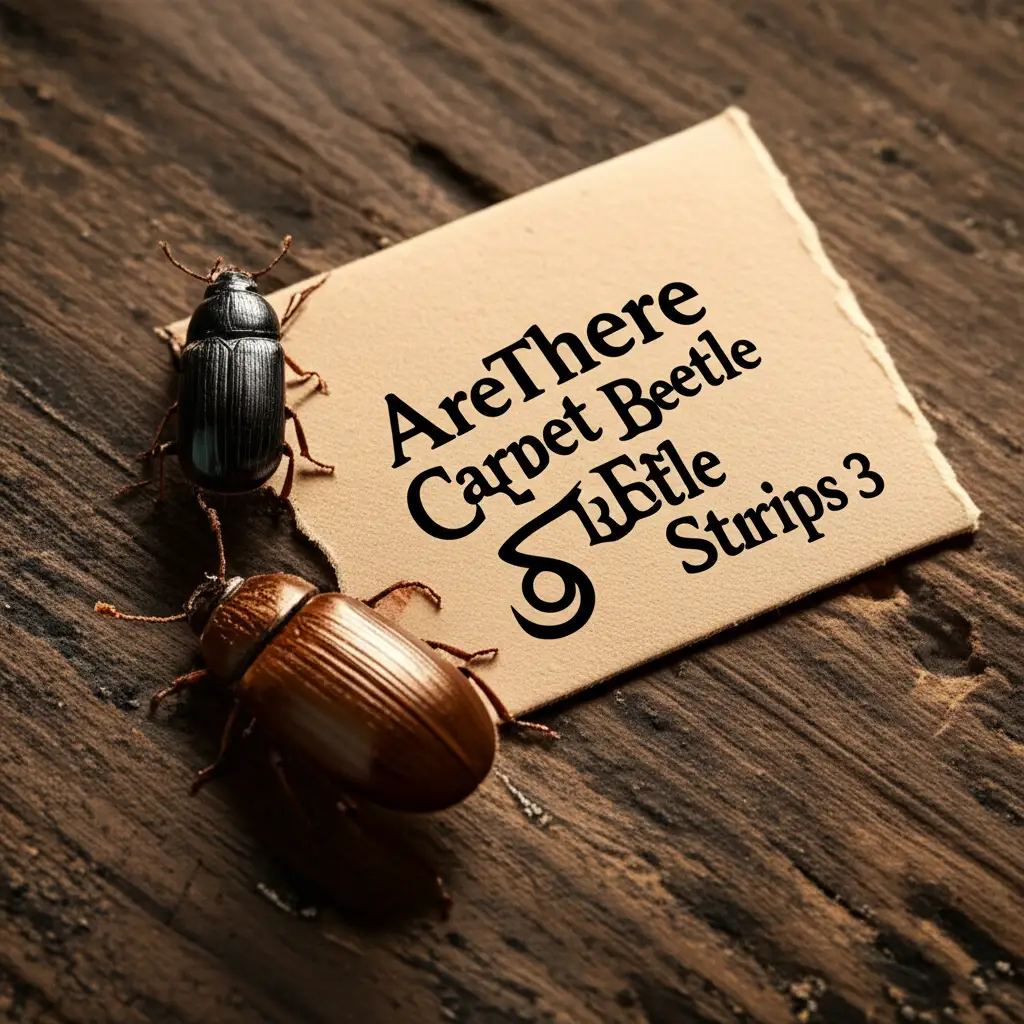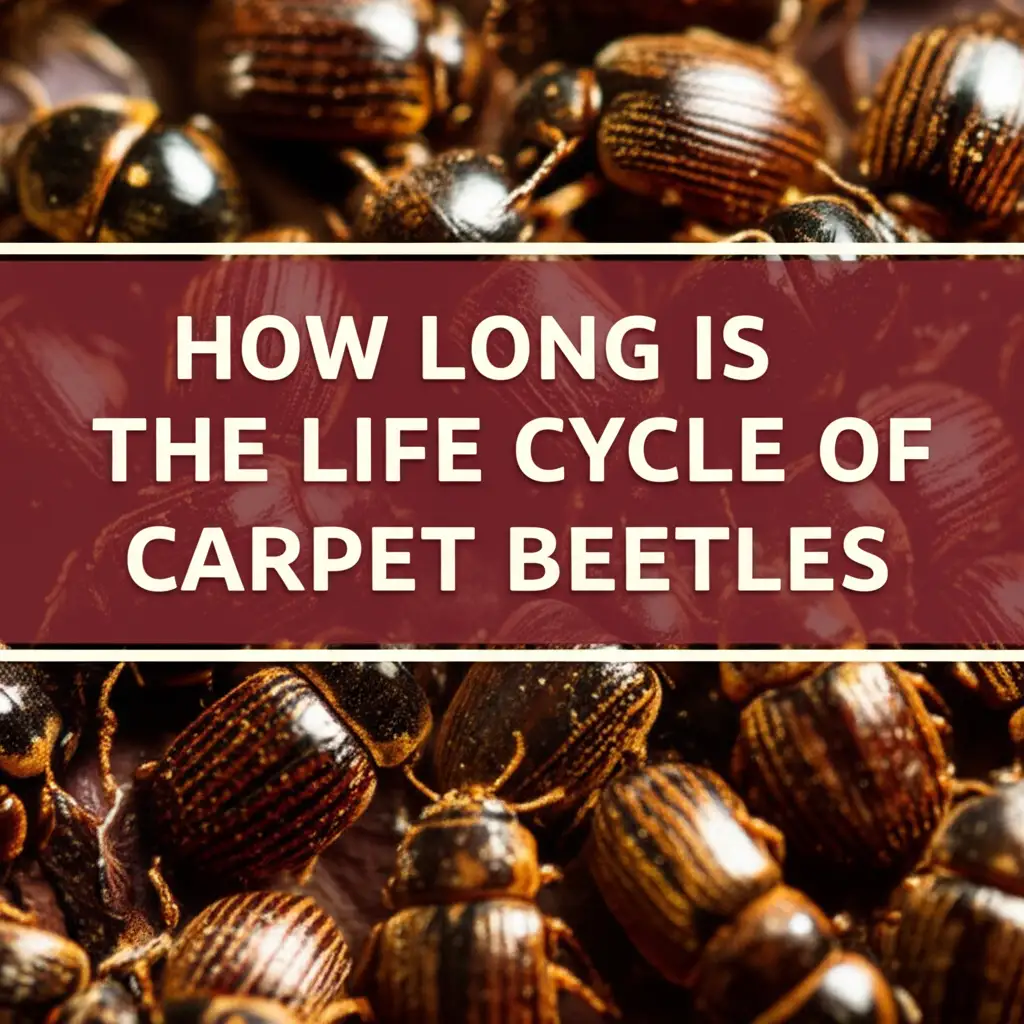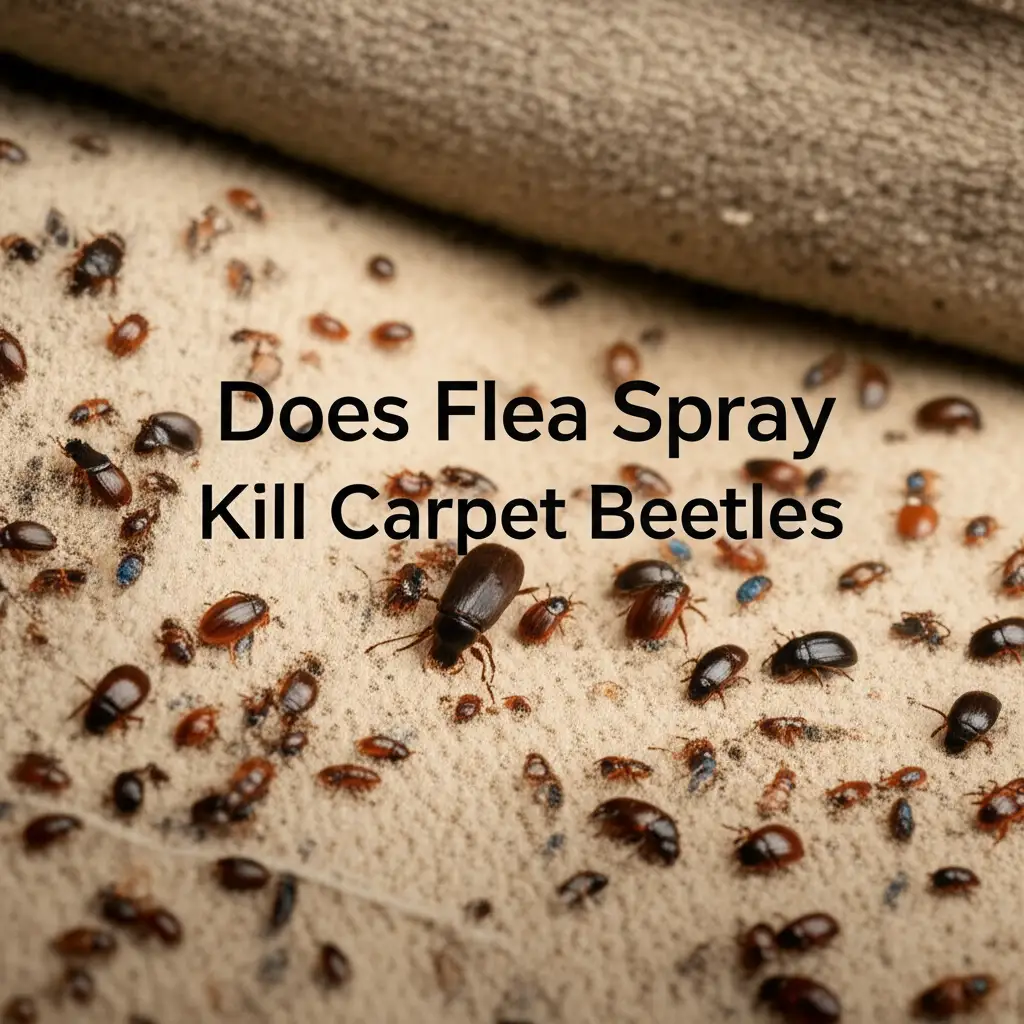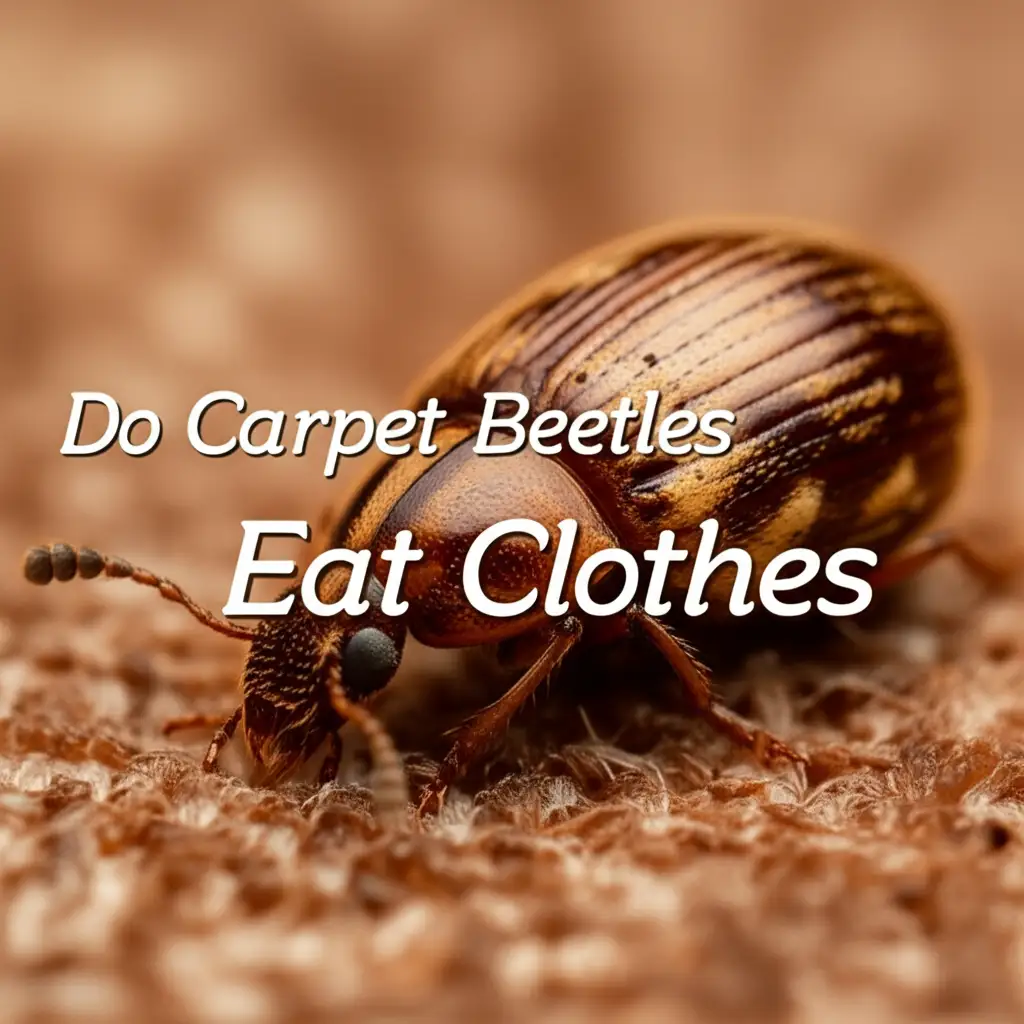· Liora Benning · Pest Control · 14 min read
What Do Carpet Beetle Eggs Look Like
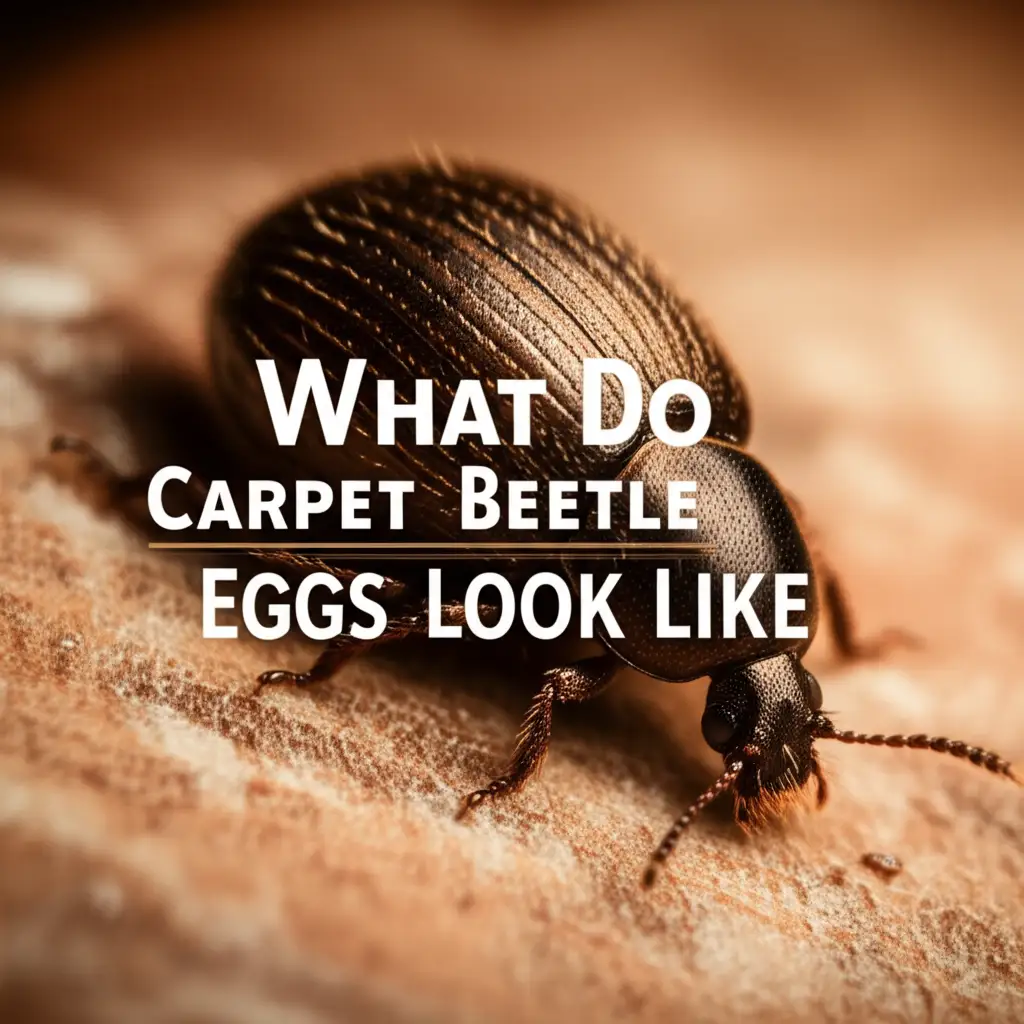
What Do Carpet Beetle Eggs Look Like?
Have you ever noticed tiny specks in your home and wondered if they are something harmful? Understanding what carpet beetle eggs look like is a key step in protecting your home from a potential pest problem. These tiny eggs are often the first sign of an infestation, yet they are easily missed. We will explore the appearance, hiding spots, and life cycle of these common household pests. By the end of this guide, you will know exactly what to look for and how to act.
Carpet beetles can cause significant damage to your belongings if left unchecked. They are not just interested in carpets; they target a wide range of natural fibers. This includes wool, silk, fur, and even pantry items. Learning to identify their eggs early allows you to stop an infestation before it spreads. This article provides a comprehensive look at these tiny invaders. We will cover their characteristics, where they hide, and effective strategies for removal and prevention.
Takeaway
- Carpet beetle eggs are tiny, oval-shaped, and usually white or cream-colored.
- They often hide in dark, undisturbed areas like carpet fibers, fabric folds, and cracks.
- Early identification and prompt action are crucial to prevent widespread damage.
- Regular cleaning, vacuuming, and proper storage help prevent infestations.
Carpet beetle eggs are very small, typically less than 1 millimeter long, appearing as tiny, pearly white or cream-colored oval specks. They are often found in secluded, undisturbed areas where adults have access to natural fibers for their larvae to feed upon.
Understanding the Appearance of Carpet Beetle Eggs
When you are looking for carpet beetle eggs, size is the most defining characteristic. These eggs are incredibly small, often less than 1 millimeter in length. Imagine a speck of dust, and you are close to visualizing their size. Their small stature makes them very difficult to spot with the naked eye.
The shape of carpet beetle eggs is typically oval or elongated. They do not have sharp edges. They are smooth and somewhat uniform in their shape. This helps them blend into surfaces like carpet fibers or fabric weaves.
As for color, most carpet beetle eggs appear pearly white or cream. Sometimes, they might have a slight yellowish tint. This light color also contributes to their camouflage, especially on lighter fabrics or dusty surfaces. The texture is generally smooth and non-sticky. They do not clump together easily. Finding them usually involves close inspection of suspect areas. You might need a magnifying glass to see them clearly. Knowing their appearance helps you confirm their presence quickly.
Where Carpet Beetles Lay Their Eggs
Carpet beetles are strategic about where they deposit their eggs. They seek out locations that offer both protection and a readily available food source for their larvae. These spots are usually dark, undisturbed, and close to natural fibers. Understanding these common hiding places is essential for effective inspection.
One primary location is within carpet fibers themselves. The larvae, once hatched, feed on materials like wool carpets. They can also hide in the seams or under the edges of rugs. Other textiles are also vulnerable. This includes upholstered furniture, especially older pieces with natural fiber padding. Clothing made of wool, silk, or fur stored in closets or drawers is also a target. Protecting your carpet from various issues, including pests, is a proactive step homeowners should consider.
Adult female carpet beetles lay their eggs in cracks and crevices. These small spaces offer excellent protection. You might find eggs along baseboards, in floor cracks, or behind wall hangings. Even air ducts and vents can harbor them. Pantry areas are another surprising spot. Some carpet beetle species feed on dried foods. This includes cereals, pasta, and pet food. You might find eggs in food packaging or on shelves. Understanding why carpet beetles enter homes often involves these food sources and seeking shelter.
- Common Hiding Spots:
- Carpets and Rugs: Deep within fibers, especially wool or silk.
- Upholstered Furniture: In seams, cushions, and under padding.
- Clothing and Linens: Stored natural fiber items (wool, silk, fur, felt).
- Closets and Drawers: Dark, undisturbed areas where items are stored.
- Cracks and Crevices: Along baseboards, floorboards, and wall junctures.
- Pantry Items: Dried foods, pet food, and spices.
- Animal Products: Taxidermy, wool insulation, pet hair, bird nests in eaves.
The Life Cycle of a Carpet Beetle
The life cycle of a carpet beetle moves through four distinct stages: egg, larva, pupa, and adult. Each stage plays a critical role in the beetle’s development and impact on your home. Understanding this cycle helps in pest control efforts. The length of each stage depends on factors like temperature, humidity, and food availability.
The cycle begins when an adult female beetle lays her tiny eggs. These carpet beetle eggs hatch into larvae, which are the most destructive stage. Larvae are often fuzzy or bristly. They are known as “woolly bears” due to their appearance. These larvae are responsible for the damage to fabrics and stored goods. They will feed continuously, growing and shedding their skin multiple times. This shed skin, called exuviae, is often a key sign of an infestation.
After reaching a certain size, the larva transforms into a pupa. The pupal stage is a period of inactivity. The larva encloses itself in a pupal casing. This casing might be a shed larval skin or a cocoon-like structure. During this stage, the beetle undergoes metamorphosis. It transforms into an adult. The pupal stage can last from a few days to several weeks. This depends on environmental conditions. Carpet beetles often prefer warmer conditions, which can influence the speed of their life cycle.
Finally, the adult beetle emerges from the pupa. Adult carpet beetles are small, oval-shaped insects. They vary in color and pattern depending on the species. Unlike the larvae, adult carpet beetles do not feed on fabrics. They typically feed on pollen and nectar outdoors. However, they are still a problem because they mate and lay new eggs. This continues the infestation cycle. Understanding this progression is key to breaking the cycle. This helps to eliminate the pests from your home.
Differentiating Carpet Beetle Eggs from Other Pests’ Eggs
Identifying carpet beetle eggs correctly is crucial for effective pest control. Many household pests lay tiny eggs. Some eggs might look similar at first glance. Knowing the subtle differences helps you target the right pest. This saves you time and effort.
One common confusion is with dust mite eggs. Dust mites are microscopic. Their eggs are also too small to see without magnification. Unlike carpet beetle eggs, dust mite eggs are usually found in dust accumulations. They are not typically laid on specific fabric fibers in noticeable clusters. Dust mites also do not cause visible damage to fabrics. Carpet beetle larvae, however, leave clear feeding damage.
Clothes moth eggs are another source of confusion. Clothes moths are also fabric pests. Their eggs are similar in size to carpet beetle eggs. They are also off-white. However, clothes moth eggs are often more elongated. They may have a sticky coating. This helps them adhere firmly to fabric threads. Clothes moth larvae also spin silken tunnels or cases. These are not present with carpet beetle larvae. Looking for these larval signs helps distinguish between the two pests.
Bed bug eggs are yet another type of tiny, white egg. Bed bug eggs are usually laid in clusters in cracks and crevices. They are about 1 mm long and pearly white. They are very difficult to spot. However, bed bug infestations typically involve bites on humans. You will also see dark fecal spots on mattresses. Carpet beetles do not bite humans. Their activity is focused on consuming natural fibers. Pay attention to the location, surrounding signs, and damage patterns. These details will help you pinpoint the specific pest. Correct identification ensures you choose the right treatment.
Key Signs of a Carpet Beetle Infestation (Beyond Eggs)
While finding carpet beetle eggs confirms an infestation, other signs are often more visible. These indicators can help you detect a problem even if you miss the tiny eggs. Recognizing these signs early allows for prompt action. It helps prevent extensive damage to your belongings.
The most common sign of a carpet beetle infestation is damage to natural fiber materials. This includes holes or thinning areas on wool carpets, rugs, and upholstered furniture. You might see similar damage on wool blankets, silk clothing, or fur items. Unlike clothes moths, carpet beetle larvae tend to feed irregularly. This creates patchy, worn-out areas rather than distinct holes. This damage is often found in hidden spots. These spots include under furniture, in folds of fabric, or inside storage boxes.
Another strong indicator is the presence of the larvae themselves. Carpet beetle larvae are small, hairy, and brownish-black. They have tufts of hair on their bodies, earning them the nickname “woolly bears.” You might see them crawling slowly across floors or on affected items. Their shed skins, or exuviae, are also a clear sign. As larvae grow, they shed their outer casings multiple times. These empty, shell-like skins are often found near damaged items. They look like miniature, translucent versions of the larvae.
You might also notice adult carpet beetles. They are small, oval-shaped beetles. They often fly towards light sources, like windows. Adult beetles do not cause damage themselves. However, their presence indicates an active breeding population nearby. They are often found near windows in spring. This is when they emerge to seek mates and lay eggs. Fine, powdery droppings, known as frass, can also be present. This frass is often the same color as the material they are eating. This helps it blend in. Inspecting these areas provides strong evidence of a problem.
Preventing Carpet Beetle Eggs and Infestations
Preventing carpet beetle eggs from taking root in your home is always easier than dealing with a full-blown infestation. A proactive approach involves a combination of cleanliness and smart storage. These strategies create an unwelcoming environment for these pests.
Regular and thorough vacuuming is your first line of defense. Focus on carpets, rugs, and upholstered furniture. Pay special attention to edges, corners, and under heavy furniture. These are common hiding spots for eggs and larvae. Use a vacuum with strong suction. Also, use appropriate attachments to reach deep into crevices. For specific vacuum settings, understanding low and high carpet settings on a vacuum can optimize your cleaning. Dispose of vacuum bags outdoors immediately after use. This prevents any collected eggs or larvae from escaping.
Proper storage of natural fiber items is equally important. Before storing clothing, blankets, or linens, clean them thoroughly. This removes any existing eggs or larvae. Use airtight containers or garment bags for long-term storage. Cedar chests can offer some repellency, but airtight containers provide the best protection. Avoid storing natural fibers in damp, dark basements or attics. These conditions are ideal for pest activity.
Consider professional carpet cleaning regularly, especially for high-traffic or valuable carpets. Professional cleaning can reach deep into carpet fibers. This removes hidden eggs and larvae. When looking for a service, know what to look for in a carpet cleaner. You can also use insect repellents designed for fabrics in vulnerable areas. Always test them on an inconspicuous spot first. This checks for discoloration. Sealing cracks and crevices in your home also helps. This eliminates entry points and hiding spots for adult beetles. These preventive measures reduce the risk of carpet beetle eggs becoming a significant problem.
Effective Methods for Eliminating Carpet Beetle Eggs and Larvae
Once you confirm the presence of carpet beetle eggs or larvae, immediate action is necessary. A multi-pronged approach is usually most effective for elimination. This combines thorough cleaning, targeted treatments, and continued vigilance.
Start with intense vacuuming. Use a powerful vacuum cleaner and go over all affected areas multiple times. This includes carpets, rugs, furniture, and even curtains. Pay close attention to baseboards, cracks, and under furniture. Use crevice tools to reach tight spots. Immediately empty the vacuum cleaner bag outside into a sealed trash bag. This prevents any eggs or larvae from re-entering your home. For stubborn areas or large rugs, consider professional steam cleaning. The high heat can kill eggs and larvae. You can also dry clean a carpet for some delicate materials.
For infested clothing or small fabric items, laundering is effective. Wash items in hot water (at least 120°F or 49°C) if the fabric allows. Dry them on high heat for at least 30 minutes. For delicate items that cannot be hot washed, consider freezing them. Place items in a sealed plastic bag and freeze for at least 72 hours. This extreme cold kills eggs and larvae. After freezing, remove items and shake them out. This removes dead pests.
Chemical treatments can be an option for severe infestations. Insecticides labeled for carpet beetles can be applied to infested areas. Always read and follow the product instructions carefully. Use them safely, especially around pets and children. Diatomaceous earth is a natural alternative. It is a fine powder that dehydrates insects. Sprinkle it in cracks, crevices, and under furniture. Leave it for a few days, then vacuum it up. For large or persistent infestations, professional pest control is the best course of action. They can identify the exact species and apply more potent treatments. Continued monitoring and regular cleaning help prevent recurrence.
FAQ Section
Are carpet beetle eggs harmful to humans?
Carpet beetle eggs are not directly harmful to humans. They do not bite or sting. However, the larvae that hatch from these eggs can cause skin irritation in some sensitive individuals. This irritation comes from contact with their bristly hairs. The main harm from carpet beetle eggs is the potential damage to your household items.
How long do carpet beetle eggs take to hatch?
The incubation period for carpet beetle eggs varies based on environmental conditions like temperature and humidity. Generally, carpet beetle eggs hatch relatively quickly. They typically hatch within 7 to 35 days after being laid. Warmer temperatures tend to speed up the hatching process. This is why quick action is important once you spot them.
Can vacuuming remove carpet beetle eggs?
Yes, regular and thorough vacuuming is an effective method for removing carpet beetle eggs. The strong suction of a vacuum cleaner can pick up these tiny eggs from carpet fibers, cracks, and other surfaces. It’s crucial to empty the vacuum cleaner bag immediately outdoors after cleaning to prevent re-infestation.
What attracts carpet beetles to a home?
Carpet beetles are primarily attracted to natural animal fibers and products. This includes wool, silk, fur, leather, feathers, and pet hair. They also feed on dried food products like cereals and pet food. Adult beetles can enter homes through open windows or cracks seeking places to lay eggs.
Do carpet beetles fly?
Yes, adult carpet beetles can fly. They are typically attracted to light and may be seen flying near windows or light fixtures indoors. This flying ability allows them to enter homes and spread infestations from one area to another. However, it is the larvae, not the adults, that cause damage.
Where do carpet beetles come from?
Carpet beetles often come from outdoors, where adult beetles feed on pollen and nectar. They can enter homes through open windows, doors, or cracks in foundations. They may also be brought inside on infested items like old furniture, secondhand clothes, or even flowers from your garden.
Conclusion
Understanding what carpet beetle eggs look like is the first vital step in protecting your home from these common pests. We have explored their tiny, oval, and often cream-colored appearance, barely visible to the naked eye. We also covered their preferred hiding spots, such as deep within carpet fibers, upholstered furniture, and dark crevices. Recognizing these small signs helps you act quickly.
The life cycle of carpet beetles, from egg to destructive larva and then to adult, highlights why early intervention is so critical. The larvae are the true culprits behind fabric damage. By identifying eggs or other signs like shed skins and patchy fabric damage, you can stop the infestation before it worsens. Implementing preventive measures like regular vacuuming, proper storage of natural fibers, and sealing entry points creates a less inviting environment. For existing issues, thorough cleaning, laundering, and targeted treatments are essential.
Do not let these tiny invaders take over your home. Stay vigilant, know the signs, and take prompt action. Regularly inspect your carpets, furniture, and stored items. If you suspect a carpet beetle problem, immediate cleaning and treatment can save your precious belongings. Protect your cozy home; inspect for carpet beetle eggs today.


